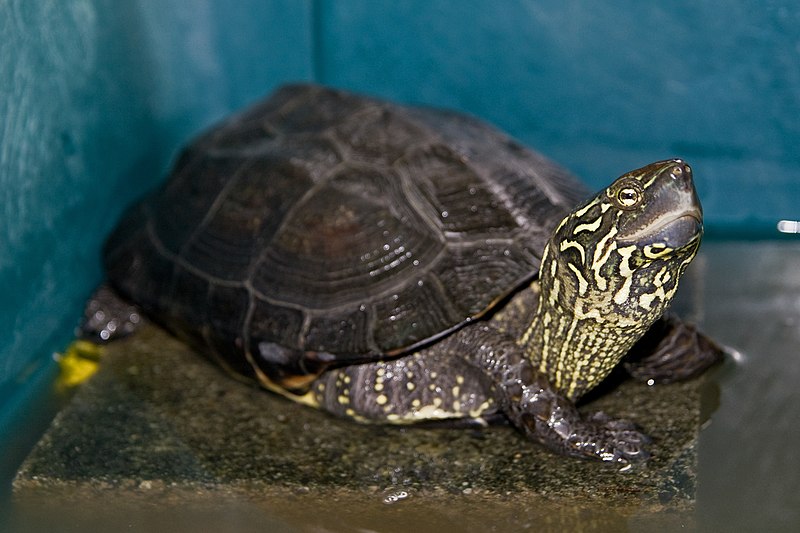 The 26 Mud and Musk Turtle species (Family Kinosternidae and Staurotypidae) share a common body plan and general behaviors, yet show an astonishing range of adaptations to diet, habitat and predators. Among them we find both North America’s smallest turtle and brutes with jaws capable of crushing a finger. Very few receive attention from hobbyists or zoos, yet nearly all are hardy and can be bred in captivity. I’ve had the good fortune of keeping 15 or so species, including my longest-lived pet, a 41 year-old Common Musk Turtle (please see Part 1)…following is an introduction to some unique species.
The 26 Mud and Musk Turtle species (Family Kinosternidae and Staurotypidae) share a common body plan and general behaviors, yet show an astonishing range of adaptations to diet, habitat and predators. Among them we find both North America’s smallest turtle and brutes with jaws capable of crushing a finger. Very few receive attention from hobbyists or zoos, yet nearly all are hardy and can be bred in captivity. I’ve had the good fortune of keeping 15 or so species, including my longest-lived pet, a 41 year-old Common Musk Turtle (please see Part 1)…following is an introduction to some unique species.
Note: All Mud and Musk Turtles can deliver painful and, in the case of the Mexican Giant Musk, dangerous bites. Many calm down in captivity, but extreme caution is always necessary. Read More »

 That Reptile Blog – Reptile, Amphibian and Exotic Pet Care and Information
That Reptile Blog – Reptile, Amphibian and Exotic Pet Care and Information




